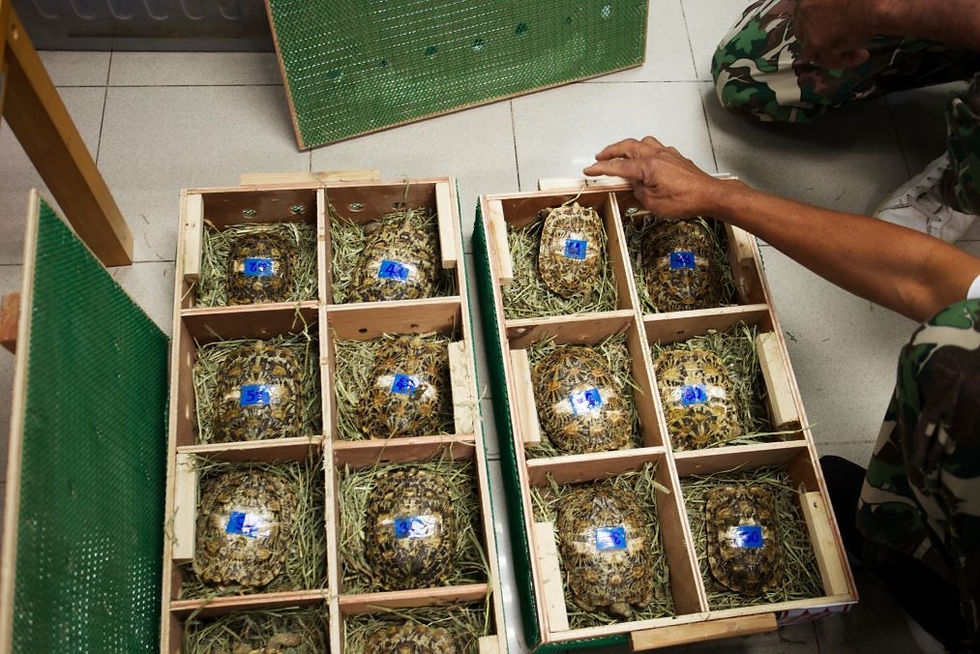Exposing Fake Animal Rescue Videos: A Closer Look at Animal Exploitation Online.
- Brenda Karimi
- Oct 28, 2024
- 4 min read
Updated: Feb 28
We’ve all seen those viral animal rescue videos online. The ones that tug at our hearts and give us faith in humanity. A tiny animal is moments away from disaster when a brave soul swoops in to save the day.
But what if I told you some of these “rescue” videos are nothing but cruel setups? Yes, many of these videos aren’t real rescues; they’re scripted stunts, forcing animals into staged dangers just for clicks, shares, and ultimately, money.

In recent years, the internet has become a powerful platform for raising awareness about animals. Heart warming animal rescue videos, in particular, have inspired millions around the world, showcasing courageous acts of kindness.
However, there’s a dark side to this trend. A rising wave of fake animal rescue videos has emerged, exploiting animals for profit, views and social media fame.
In this article, we’ll explore the troubling trend of staged animal rescues and the steps we can take to protect animal welfare in the digital age.
The Rise of Fake Animal Rescue Videos
Some creators are setting up dangerous situations for animals solely to stage a “rescue” for viral content. These animals are often forced into dangerous situations by the very people claiming to save them, putting them through endless fear, stress, and sometimes, even physical harm.
These fake animal rescues typically follow a dramatic script. A small animal, often a kitten, bird or monkey, is seemingly ambushed by a predator like a snake. Just as the situation looks hopeless, a “hero” steps in to separate them and saves the day.
This disturbing trend manipulates viewers’ emotions, as animals appear to be “rescued” from life-threatening scenarios- scenarios that are often fabricated for the camera.
Platforms like YouTube and TikTok have unfortunately become home to countless fake rescues where animals are intentionally placed in harm’s way. This exploitation is not only unethical but often crosses into outright animal cruelty on social media, misleading well-intentioned audiences who believe they’re supporting a noble cause.
How to spot fake animal rescue videos
To help combat this harmful trend, it is important to recognize the signs of fake animal rescue videos. Animal experts have identified some telltale signs of these set ups.
For example, Herpetologists discovered that pythons are shown hunting in broad daylight in these videos, even though they’re nocturnal predators. These details may seem small, but they point to a disturbing reality that these animals are often put together just for the sake of creating content.
Here are some key red flags to look out for:
Repetition of similar scenarios: If a channel consistently features animals in nearly identical situations, like the same type of animal “rescued” in the same location- it is likely staged. Genuine rescues are rarely so predictable.
Poor conditions of animals: If animals appear malnourished, sickly, or injured in multiple videos, it’s a sign of animal exploitation. Creators may be intentionally harming or neglecting these animals to maintain a steady supply of “rescue” content.
Unusual animal pairings: Content that shows unnatural pairings, like kittens in the presence of snakes or other dangerous predators is suspicious.
Videos that focus on extreme danger and miraculous rescues. Real rescues are usually not as dramatic.
While some rescues are filmed by professionals, an overly polished look and frequent close-ups of specific “dangerous” scenes can indicate a staged setup.
By staying vigilant and informed, viewers can learn to distinguish between real and fake rescues. Avoiding fake animal rescue videos reduces their profitability and sends a message that animal cruelty on social media will not be tolerated.
—
Social media companies like YouTube, Facebook, and TikTok hold significant responsibility for curbing the spread of fake rescues. Unfortunately, these platforms often reward high engagement, meaning that content such as dangerous animal stunts online gets more visibility. This algorithm-driven model has inadvertently encouraged viral animal rescue scams.
The algorithms may push videos showing dangerous or “heroic” content to the top, as they attract more views and interactions. To address this, platforms must revise their content moderation policies to prioritize ethical content and crack down on content creators who exploit animals.
Viewers can also play a role by reporting these videos. Most platforms offer reporting features specifically for content that appears abusive. Reporting fake rescues not only flags the content for removal but also sends a clear message that there’s no audience for exploitation.
How We Can All Help Protect Animals Online
There are many ways that each of us can help protect animals from exploitation in staged rescue videos:
Promote Ethical Content: Support creators who share genuine stories of animal rescue without exploiting animals. Look for videos from reputable organizations and individuals who have a history of ethical practices.
Educate Others: Spread awareness about fake animal rescue videos and how to spot them. By educating friends, family, and followers, you can help reduce the viewership of harmful content.
Advocate for Stronger Regulations: Encourage social media platforms to adopt stricter regulations against cruelty in staged animal rescues. Public pressure can influence these companies to take action, as seen in recent campaigns for content moderation.
Support Legitimate Animal Welfare Organizations: Consider donating to or volunteering with legitimate organizations that work to protect animals from harm. These groups often engage in ethical content that educates the public without exploiting animals.
Use Reporting Tools on Social Media: Platforms have reporting functions that allow users to flag content. If you suspect a video involves animal exploitation, use these tools to bring it to the platform's attention.
Before sharing a rescue video, take a moment to consider its authenticity. Supporting ethical content helps ensure that animals receive the care and respect they deserve. Every small action counts in making a difference.



Comments